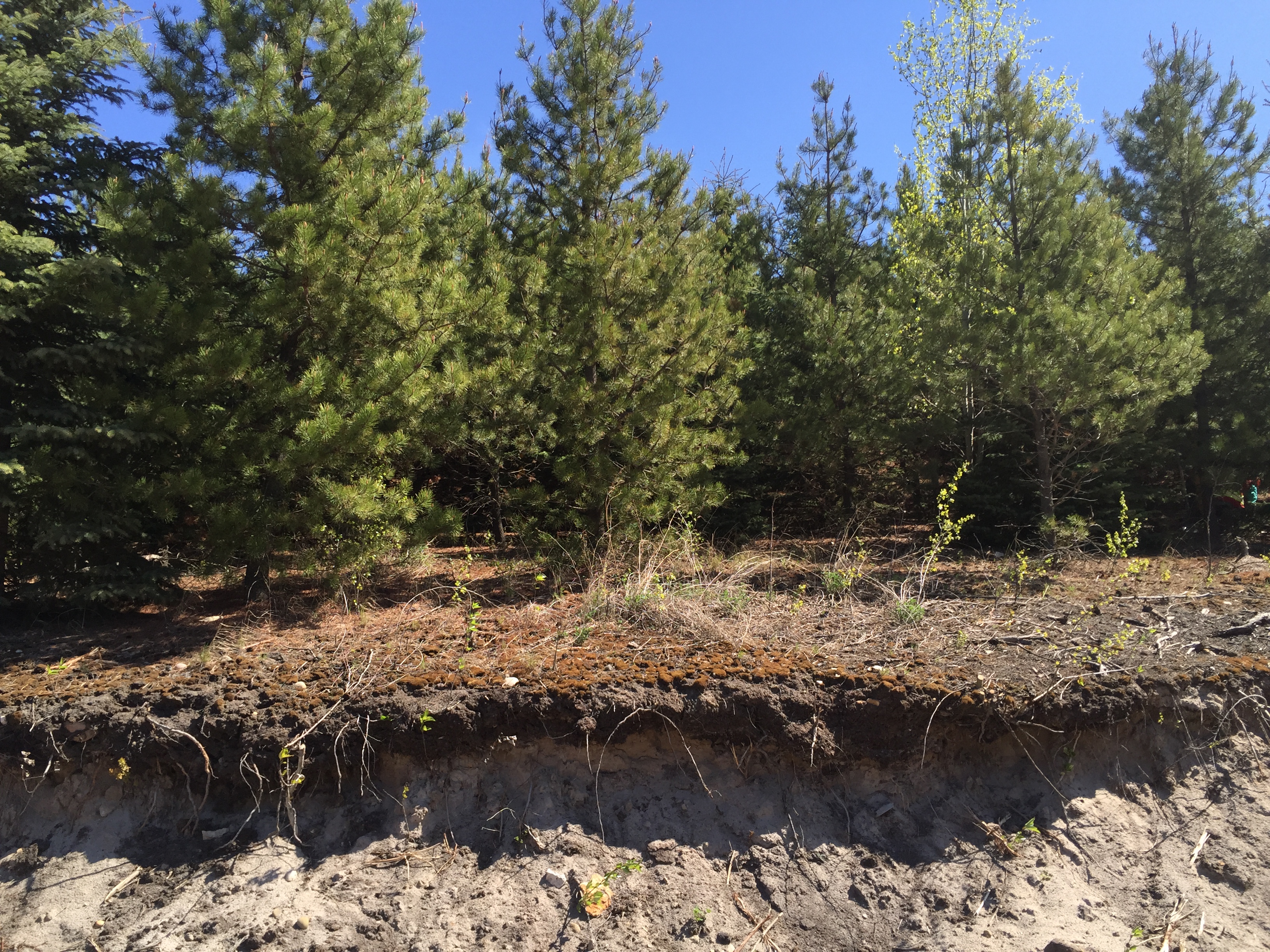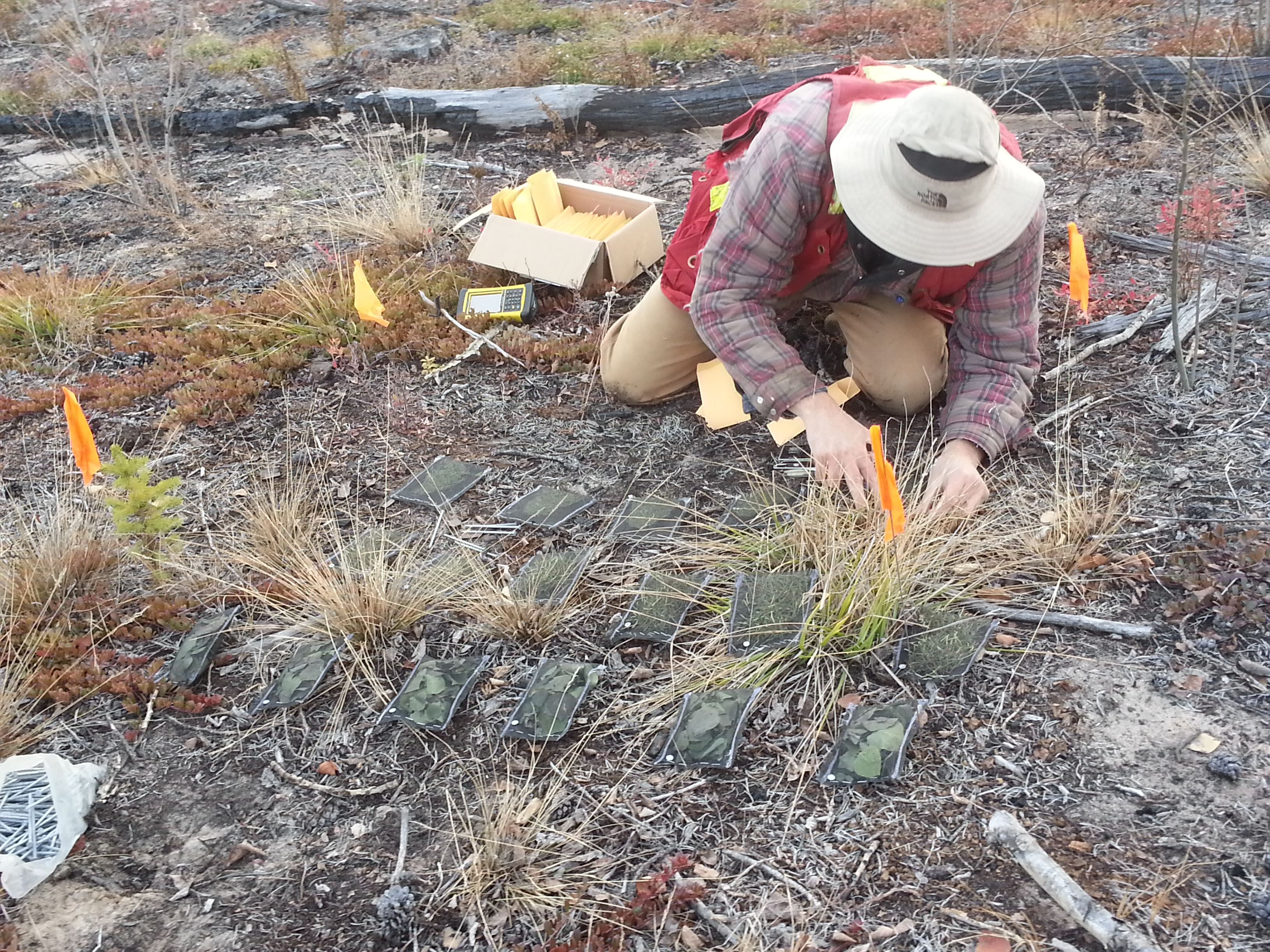
Every ecosystem on the planet is affected by human activity, and as climate change continues to have wide-spread effects on our environment, these impacts will only become more significant. Our global population has increased exponentially since the end of the Second World War, along with our consumption of land, water, fertilizer and energy (to name a few). Many experts believe Earth has entered a new epoch (or period of geological change) dominated by our activities, called the Anthropocene.
Global human impacts on the environment are so pervasive that soil scientists have even proposed a new type of soil to describe the effects of human activity: Anthroposols.
Anthroposols result from drastic changes to natural soil profiles, or even construction of new, human-made soils to patch our most severe disturbances (e.g., mine tailings, landfills and housing developments).
When placed in natural environments, we task these novel soils to mimic and support natural ecosystem function. But there isn’t a standard measure of their performance, so it’s difficult to gauge their effectiveness.
The general view is if an ecosystem supported by Anthroposols is equally productive as one with natural soils, the Anthroposol is adequate.
But, this is just a snapshot in time. What about longer term ecosystem processes, such as nutrient cycling (i.e., how nutrients flow through organic and inorganic materials)? We need to understand how well these soils stand up to the test of time to avoid ecosystem decline.
Without this information, we don’t know the true environmental costs of these substitutes and they may not be fully realized until years down the road. By then, the damage is done and the costs to fix it are unknown. So, industry and regulators need a target to work towards.
To help with this challenge, I’m researching possible measures to understand the long-term effectiveness of Anthroposols to supply nutrients in Canada’s boreal forest. This research will help industry and regulators achieve their environmental goals, and keep our ecosystems, and the biodiversity within them, in good health.

Medium-Term Tests (2-5 years)
Over a two-year period, I spent time in the boreal forest looking at the different factors that impact the effectiveness of Anthroposols. My research aims to provide insight into how Anthroposols are fertilized by leaf decomposition.
Decomposition of organic matter is a significant driver of nutrient cycling in forested ecosystems, with the largest source being leaves regularly shed from trees. This is important throughout the year, but particularly in autumn.
Which nutrients, and how many, are released during leaf decomposition on Anthroposols? Leaves decompose quickly at the start, which means there is potential to use them as a medium-term functional test for measuring Anthroposol performance.

So far, results from my study sites show decomposition rates and nutrient release are higher on human-made soil covers. This is most likely linked to greater environmental exposure (higher ground-level temperatures linked to a lack of shade from trees).
But how can we gain insight over longer time periods?
Longer Term Tests (10 years to end of tree life)
In the absence of long-term direct monitoring data, I am also interested in using trees to track longer term changes in nutrient supply. Can Anthroposols provide sufficient nutrients to support tree growth?
Trees have an intimate relationship with the soil in which they grow, are typically long-lived and are excellent at mapping environmental change.
Is it possible to use dendrochronology (the study of tree rings in wood) to measure nutrient concentrations in trees growing on Anthroposols as a substitute for time? The answer is not straightforward, considering:
- wood itself is dead tissue and nutrients are extracted when it forms
- sap (the nutrient transport mechanism in trees) flows through rings, contaminating whatever residual nutrients remain in the wood tissue
After much investigation, the answer is dendrochronology provides some clues.

By understanding if nutrients are associated with wood or sap, the picture becomes increasingly clear. Not all nutrients are extracted from dead wood and the low concentration that remain tell a story.
Nutrient concentrations in wood increase over time on both natural soils and Anthroposols. Possible causes might be linked to growth of an advanced root network or an increase in human activity (e.g., fertilization or nutrients deposited by air pollution). More research is required.
However, the results of my research show Anthroposols could provide the nutrients required over the lifetime of the trees investigated.

An Ever-Expanding Footprint
We are beginning to understand our effects on the natural world, but we need good measures to determine success, particularly where we’ve constructed something to mimic natural materials, like soil.
To understand the full impact, measurement needs to include a long-term view. Good monitoring data are not always available, which is why this research (and more like it) is important, so that industry and regulators have the resources to make informed decisions. Retrospective investigations show how well we have done over time and using trees and leaves as indicators of ecosystem function may produce valuable insights into measuring Anthroposols.
